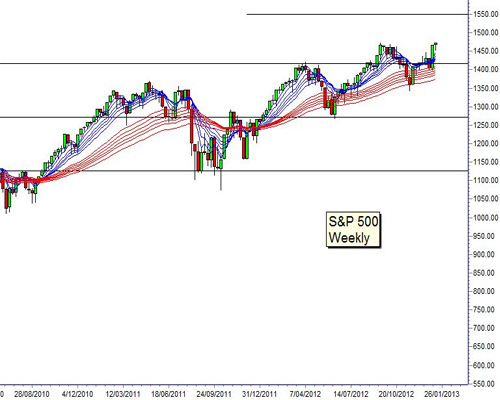Starting October 2012, the S&P 500 Index has developed a strong and stable uptrend. The uptrend is well defined using the Guppy Multiple Moving Average (GMMA) indicator. This indicator has two groups of averages.
The long term group captures the thinking of investors. Wide separation shows strong investor support for the trend. The short term group shows the thinking of traders. In the S&P index they are not quite as confident as investors.
The S&P shows rally and retreat behavior with the lower edge of the long term GMMA tested in June 2012 and again in November. For each test investors have come into the market as buyers because they believe the S&P can go higher. This is a bullish result and confirms the strength of the uptrend.
(Read More: US Markets Overview)
The trend behavior does not include any chart patterns which help to set upside targets. However, the long term pattern of support and resistance shows the S&P index moves in wide trading bands.
Each of these bands is around 140 index points wide. The lowest of the support/resistance level is near 1130. The next support/resistance level is near 1270. The current support/resistance level is near 1410. The current rally is a rebound rally from this support/resistance level at 1410. The width of the trading bands provides the next upside target for this uptrend. It is near 1550.




